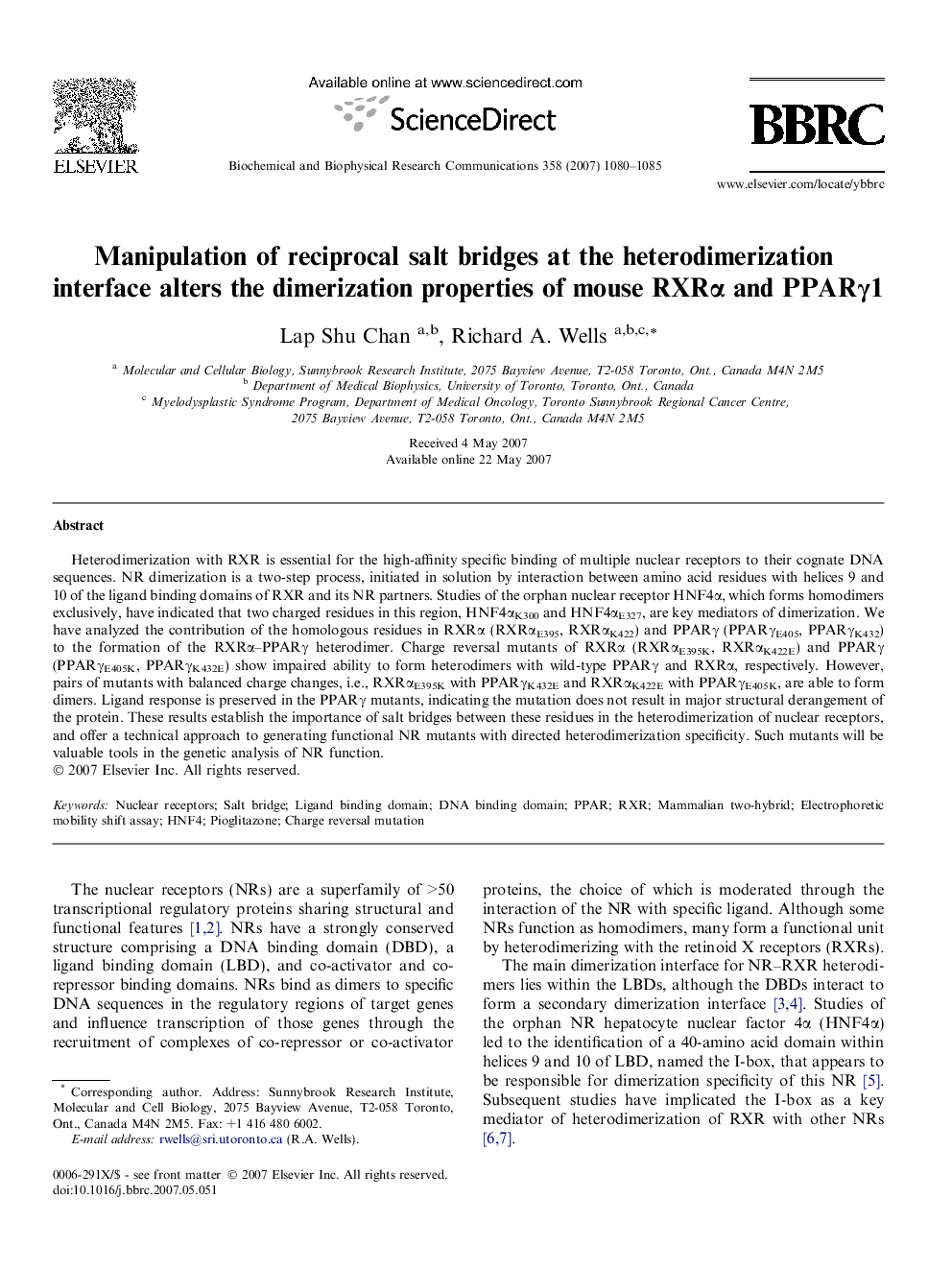| Article ID | Journal | Published Year | Pages | File Type |
|---|---|---|---|---|
| 1937770 | Biochemical and Biophysical Research Communications | 2007 | 6 Pages |
Heterodimerization with RXR is essential for the high-affinity specific binding of multiple nuclear receptors to their cognate DNA sequences. NR dimerization is a two-step process, initiated in solution by interaction between amino acid residues with helices 9 and 10 of the ligand binding domains of RXR and its NR partners. Studies of the orphan nuclear receptor HNF4α, which forms homodimers exclusively, have indicated that two charged residues in this region, HNF4αK300 and HNF4αE327, are key mediators of dimerization. We have analyzed the contribution of the homologous residues in RXRα (RXRαE395, RXRαK422) and PPARγ (PPARγE405, PPARγK432) to the formation of the RXRα–PPARγ heterodimer. Charge reversal mutants of RXRα (RXRαE395K, RXRαK422E) and PPARγ (PPARγE405K, PPARγK432E) show impaired ability to form heterodimers with wild-type PPARγ and RXRα, respectively. However, pairs of mutants with balanced charge changes, i.e., RXRαE395K with PPARγK432E and RXRαK422E with PPARγE405K, are able to form dimers. Ligand response is preserved in the PPARγ mutants, indicating the mutation does not result in major structural derangement of the protein. These results establish the importance of salt bridges between these residues in the heterodimerization of nuclear receptors, and offer a technical approach to generating functional NR mutants with directed heterodimerization specificity. Such mutants will be valuable tools in the genetic analysis of NR function.
